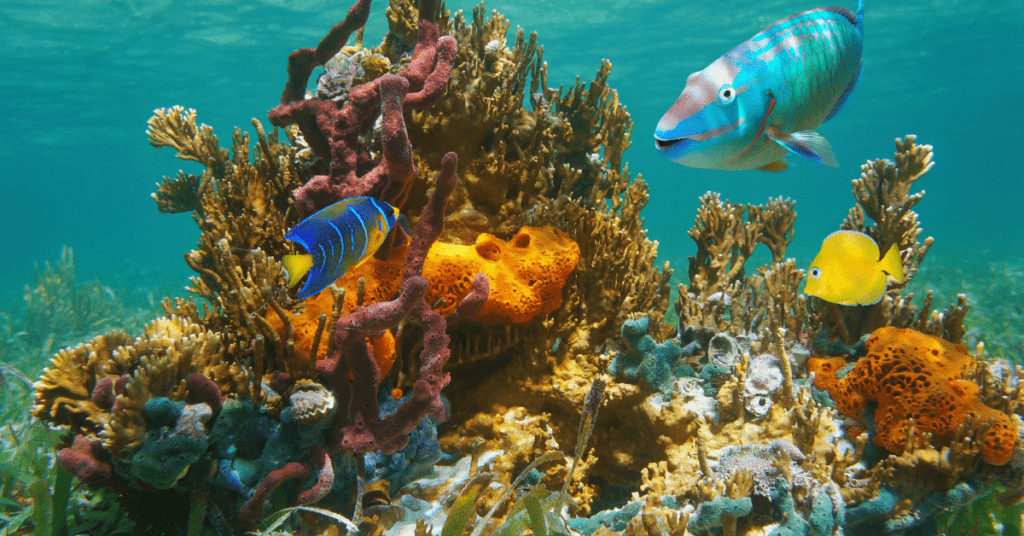Understanding Environmental Challenges
In today’s world, our planet faces an array of pressing environmental challenges that threaten the delicate balance of ecosystems and endanger biodiversity. From the ominous specter of climate change to the rampant deforestation and pollution plaguing our land and seas, the need for concerted action has never been more urgent. Understanding the scope and impact of these challenges is crucial for devising effective strategies for conservation and sustainability.

At the forefront of these challenges lies climate change, a global phenomenon driven primarily by human activities such as the burning of fossil fuels, deforestation, and industrial processes. The resulting increase in greenhouse gas emissions has led to rising temperatures, melting ice caps, more frequent extreme weather events, and disruptions to ecosystems worldwide. These changes not only endanger vulnerable species but also pose significant risks to human health, food security, and economic stability.
Deforestation stands as another critical environmental issue, with vast swathes of forests being cleared each year to make way for agriculture, urbanization, and logging. This rampant deforestation not only destroys crucial habitats for countless plant and animal species but also exacerbates climate change by reducing the planet’s capacity to absorb carbon dioxide from the atmosphere. Moreover, deforestation contributes to soil erosion, loss of biodiversity, and disruption of water cycles, further undermining the health and resilience of ecosystems.
Pollution, in its various forms, presents yet another formidable challenge to environmental conservation. Whether it’s air pollution from vehicle emissions and industrial activities, water pollution from untreated sewage and agricultural runoff, or plastic pollution choking our oceans and waterways, the pervasive presence of pollutants poses grave threats to both terrestrial and aquatic ecosystems. Pollution not only harms wildlife and ecosystems but also jeopardizes human health, with millions of people worldwide suffering from respiratory illnesses, waterborne diseases, and other health problems due to exposure to pollution.
In light of these challenges, it is imperative that we recognize the interconnectedness of environmental issues and their far-reaching implications for the planet and all its inhabitants. Addressing these challenges requires a multifaceted approach that encompasses scientific research, policy intervention, technological innovation, and concerted collective action at local, national, and global levels. By understanding the complex dynamics of environmental change and the profound impacts of human activities on the planet, we can begin to chart a course toward a more sustainable and resilient future for generations to come.
The Rise of AI in Environmental Conservation
As the world grapples with escalating environmental challenges, there is a growing recognition of the transformative potential of artificial intelligence (AI) in addressing these pressing issues. AI, with its capacity for data analysis, pattern recognition, and predictive modeling, is revolutionizing the way we monitor, manage, and conserve the environment. From the depths of the ocean to the vast expanses of forests and beyond, AI-driven technologies are increasingly being deployed to enhance our understanding of ecological systems and inform evidence-based conservation efforts.

At its core, AI harnesses the power of advanced algorithms to process vast amounts of data and extract valuable insights that would be impractical or impossible to discern through traditional methods alone. In the realm of environmental monitoring, AI-powered tools are being used to analyze satellite imagery, aerial surveys, and sensor data to track changes in land use, detect deforestation and illegal logging activities, and monitor wildlife populations in real-time. These capabilities enable conservationists to identify hotspots of environmental degradation, prioritize conservation interventions, and respond swiftly to emerging threats.
One notable application of AI in environmental conservation is its use in wildlife conservation efforts. By leveraging machine learning algorithms, researchers can analyze large datasets of animal tracking data to identify migration patterns, habitat preferences, and behaviors of endangered species. AI-powered camera traps and acoustic monitoring devices can automatically detect and classify species, enabling more efficient and cost-effective monitoring of wildlife populations. Moreover, AI algorithms can predict potential conflicts between wildlife and human activities, helping to mitigate human-wildlife conflicts and promote coexistence.
In addition to monitoring and surveillance, AI is also playing a crucial role in sustainable resource management. AI-driven systems are being used to optimize energy consumption, improve agricultural productivity, and enhance the efficiency of water and waste management processes. By analyzing data on weather patterns, soil quality, and crop health, AI algorithms can provide farmers with personalized recommendations for sustainable farming practices, reducing the environmental impact of agriculture while ensuring food security for growing populations.
Overall, the rise of AI in environmental conservation represents a paradigm shift in our approach to addressing complex environmental challenges. By leveraging the power of AI-driven technologies, we can gain new insights into ecological systems, develop more effective conservation strategies, and work towards a more sustainable and resilient future for our planet. However, as we embrace these advancements, it is crucial to ensure that AI technologies are deployed responsibly and ethically, with due consideration for the needs and rights of local communities and ecosystems.
Applications of AI in Preserving the Planet
The applications of artificial intelligence (AI) in environmental conservation are as diverse as the ecosystems they seek to protect. Across various domains, AI-driven solutions are proving instrumental in preserving the planet and mitigating the impacts of human activities on the environment.
One significant application of AI is in environmental monitoring and data analysis. Satellite imagery analysis, powered by AI algorithms, enables researchers to monitor changes in land cover, detect deforestation, and track the expansion of urban areas. These insights provide crucial information for policymakers and conservationists to make informed decisions about land use planning, habitat restoration, and biodiversity conservation efforts.
In the realm of wildlife conservation, AI-powered tools are revolutionizing how we monitor and protect endangered species. For instance, AI algorithms can analyze acoustic data to identify animal calls and track the movements of elusive species such as marine mammals and birds. Similarly, camera traps equipped with AI technology can automatically detect and classify animals, enabling researchers to estimate population sizes, study behavior patterns, and identify individuals for conservation management purposes.
AI is also driving innovation in sustainable resource management. By analyzing vast datasets on weather patterns, soil conditions, and crop health, AI algorithms can optimize agricultural practices to minimize environmental impact while maximizing yields. Precision agriculture techniques, guided by AI, enable farmers to apply fertilizers and pesticides more efficiently, reduce water consumption, and mitigate soil erosion, thus promoting agricultural sustainability and resilience in the face of climate change.
Moreover, AI is being used to tackle challenges related to waste management and pollution. Machine learning algorithms can analyze sensor data from air and water quality monitoring systems to detect pollutants and identify sources of contamination. By providing early warnings of environmental hazards and facilitating targeted interventions, AI helps safeguard human health and ecological integrity.
In conclusion, the applications of AI in preserving the planet are wide-ranging and increasingly indispensable. By harnessing the power of AI-driven technologies, we can gain deeper insights into environmental dynamics, develop more effective conservation strategies, and work towards a more sustainable and harmonious relationship with the natural world. However, it is essential to ensure that AI deployments are guided by ethical principles, prioritize environmental justice, and empower local communities to participate in conservation efforts.
Challenges and Ethical Considerations
While the integration of artificial intelligence (AI) in environmental conservation holds immense promise, it also presents significant challenges and ethical considerations that must be addressed to ensure responsible and equitable outcomes.
One of the foremost challenges is the potential limitations and biases inherent in AI algorithms. Machine learning algorithms rely on historical data to make predictions and decisions, which can perpetuate existing biases and inequalities present in the data. In the context of environmental conservation, biased data sets could lead to skewed assessments of conservation priorities, disproportionately impacting marginalized communities and vulnerable ecosystems. Addressing these biases requires careful attention to data collection practices, algorithmic transparency, and ongoing monitoring and evaluation to mitigate unintended consequences.
Privacy concerns also loom large in the deployment of AI for environmental monitoring and surveillance. As AI technologies enable the collection and analysis of vast amounts of data, there is a risk of infringing on individual privacy rights and civil liberties. For example, the use of drones equipped with AI-powered cameras for wildlife monitoring could inadvertently capture sensitive information about human activities in remote areas, raising concerns about surveillance and data security. Balancing the need for environmental monitoring with respect for privacy rights requires clear regulatory frameworks, robust data protection measures, and mechanisms for obtaining informed consent from affected stakeholders.
Furthermore, ensuring equitable access to AI technologies and benefits is essential for fostering inclusive and participatory approaches to environmental conservation. Historically, the benefits of technological innovation have often been unequally distributed, exacerbating existing disparities and marginalizing disadvantaged communities. To avoid widening these gaps, efforts must be made to democratize access to AI tools, build capacity among local stakeholders, and promote community-led conservation initiatives that prioritize local knowledge and expertise.
In navigating these challenges, it is crucial to adopt a holistic and interdisciplinary approach that integrates technical expertise with social and ethical considerations. By fostering collaboration between scientists, policymakers, technology developers, and local communities, we can harness the transformative potential of AI for environmental conservation while upholding ethical principles, safeguarding human rights, and promoting environmental justice. Only through collective action and responsible stewardship can we realize the full promise of AI in preserving the planet for future generations.
Future Prospects and Conclusion
Looking ahead, the future of artificial intelligence (AI) in environmental conservation is filled with both excitement and anticipation. As technology continues to advance and our understanding of ecological systems deepens, the potential for AI to drive transformative change in conservation efforts is boundless.
One promising area for future development lies in the refinement and optimization of AI algorithms for environmental monitoring and predictive modeling. With ongoing improvements in machine learning techniques, AI-powered systems will become increasingly adept at analyzing complex environmental data, identifying patterns, and forecasting future trends with greater accuracy. This will enable conservationists to anticipate and mitigate environmental threats more effectively, thereby enhancing the resilience of ecosystems and biodiversity.
Moreover, the integration of AI with other emerging technologies, such as remote sensing, robotics, and blockchain, holds immense potential for enhancing the efficiency and scalability of conservation interventions. For example, autonomous drones equipped with AI-powered sensors could revolutionize wildlife monitoring and anti-poaching efforts by providing real-time data on animal populations and illegal activities in remote areas. Similarly, blockchain technology, coupled with AI, could facilitate transparent and secure transactions related to carbon offsetting, sustainable supply chains, and biodiversity conservation, thereby incentivizing greater investment in conservation initiatives.
However, as we embrace these opportunities, it is essential to remain vigilant and proactive in addressing the ethical, social, and environmental implications of AI deployment. By fostering interdisciplinary collaboration, engaging with local communities, and prioritizing principles of equity, justice, and sustainability, we can harness the transformative potential of AI for environmental conservation while minimizing unintended consequences and safeguarding the rights and interests of all stakeholders.
In conclusion, the integration of AI into environmental conservation represents a paradigm shift in our approach to addressing complex environmental challenges. By leveraging the power of AI-driven technologies, we can unlock new insights into ecological systems, develop innovative conservation strategies, and work towards a more sustainable and resilient future for our planet. With careful stewardship and responsible innovation, we can harness the full potential of AI to preserve the rich tapestry of life on Earth for generations to come.
Related Content
- 8 ways AI can help save the planet
- AI for the Planet: Highlighting AI innovations to accelerate impact
- A review of Earth Artificial Intelligence
